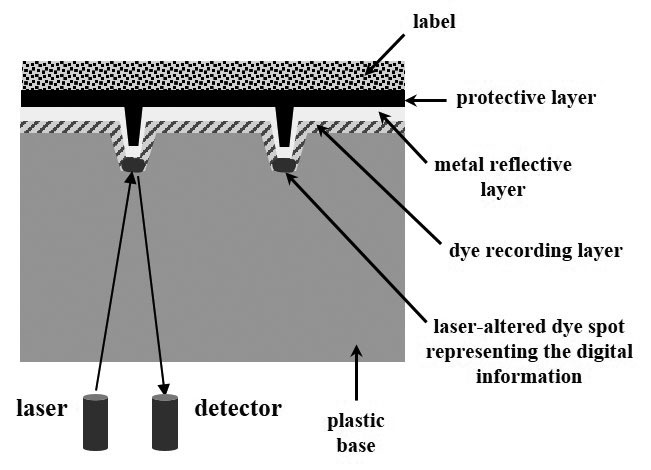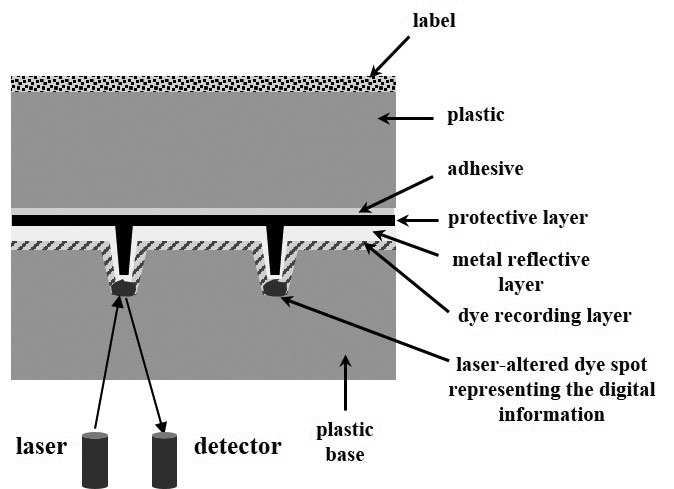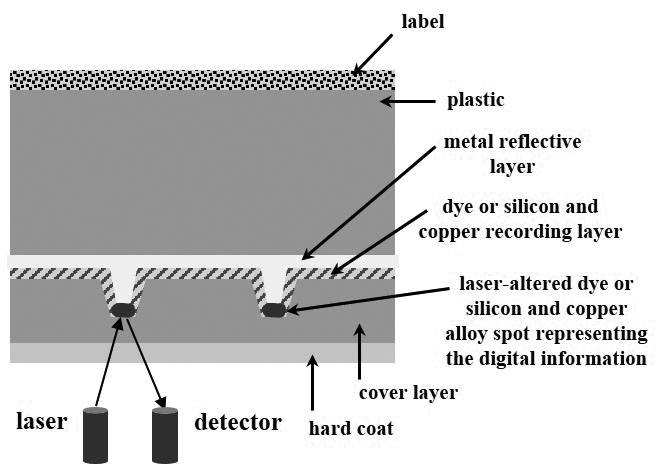Introduction
The Cd /D :EfiMicrosoftBoot directory is a critical component of the Windows operating system. It contains the boot configuration data (BCD) store, which is used to control how the operating system boots up. This directory also contains the boot loader, which is responsible for loading the operating system kernel and other essential components. Additionally, this directory contains the boot manager, which is responsible for managing the boot process. Finally, this directory also contains the boot configuration files, which are used to configure the boot process.
Exploring the Benefits of CD/DVD Storage for Data Preservation
Data preservation is an important part of any business or organization. It is essential to ensure that important information is stored securely and can be accessed when needed. One of the most reliable and cost-effective methods of data preservation is CD/DVD storage.
CD/DVD storage offers a number of benefits for data preservation. Firstly, it is a cost-effective solution. CDs and DVDs are relatively inexpensive to purchase and store, making them an ideal choice for businesses and organizations on a budget. Additionally, they are easy to store and transport, making them a convenient option for data preservation.
CD/DVD storage also offers a high level of security. CDs and DVDs are resistant to physical damage, meaning that data stored on them is less likely to be corrupted or lost. Furthermore, they can be password protected, providing an extra layer of security.
CD/DVD storage also offers a high level of durability. CDs and DVDs are designed to last for many years, meaning that data stored on them can be accessed for a long period of time. Additionally, they are resistant to environmental factors such as heat, humidity, and dust, making them an ideal choice for long-term data preservation.
Finally, CD/DVD storage is a reliable option for data preservation. CDs and DVDs are designed to be read by a wide range of devices, meaning that data stored on them can be accessed from almost any computer or device. Additionally, they are compatible with a variety of operating systems, making them a versatile choice for data preservation.
In conclusion, CD/DVD storage is an ideal choice for data preservation. It is cost-effective, secure, durable, and reliable, making it an excellent option for businesses and organizations looking to preserve important data.
How to Choose the Right CD/DVD Format for Your Needs
When it comes to choosing the right CD/DVD format for your needs, there are a few important factors to consider. First, you need to determine what type of data you will be storing on the disc. Different formats are better suited for different types of data, so it is important to choose the right format for your needs.
The most common CD/DVD formats are CD-ROM, DVD-ROM, CD-R, DVD-R, CD-RW, and DVD-RW. CD-ROM stands for Compact Disc Read-Only Memory and is used for storing data that will not be changed. DVD-ROM stands for Digital Versatile Disc Read-Only Memory and is used for storing larger amounts of data than a CD-ROM. CD-R stands for Compact Disc Recordable and is used for storing data that can be written to the disc once. DVD-R stands for Digital Versatile Disc Recordable and is used for storing larger amounts of data than a CD-R. CD-RW stands for Compact Disc ReWritable and is used for storing data that can be written to the disc multiple times. DVD-RW stands for Digital Versatile Disc ReWritable and is used for storing larger amounts of data than a CD-RW.
Once you have determined the type of data you will be storing on the disc, you can then decide which format is best for your needs. If you are storing data that will not be changed, then a CD-ROM or DVD-ROM is the best choice. If you are storing data that can be written to the disc once, then a CD-R or DVD-R is the best choice. If you are storing data that can be written to the disc multiple times, then a CD-RW or DVD-RW is the best choice.
When choosing the right CD/DVD format for your needs, it is important to consider the type of data you will be storing on the disc and the amount of data you will be storing. By taking these factors into consideration, you can ensure that you choose the right format for your needs.
Understanding the Different Types of CD/DVD Drives
CD/DVD drives are an essential component of any computer system. They are used to read and write data to and from optical discs, such as CDs and DVDs. There are several different types of CD/DVD drives available, each with its own unique features and capabilities. Understanding the differences between these drives can help you choose the right one for your needs.
The most common type of CD/DVD drive is the internal drive. These drives are installed inside the computer and are connected to the motherboard via an IDE or SATA cable. Internal drives are typically faster than external drives, and they are also more reliable. However, they are more difficult to install and require more space inside the computer.
External CD/DVD drives are connected to the computer via a USB cable. They are much easier to install than internal drives, and they are also more portable. However, they are usually slower than internal drives and may not be as reliable.
Blu-ray drives are the newest type of CD/DVD drive. They are capable of reading and writing data to and from Blu-ray discs, which are much larger than traditional CDs and DVDs. Blu-ray drives are usually more expensive than other types of drives, but they offer the highest quality and capacity.
Finally, there are also combo drives, which are capable of reading and writing both CDs and DVDs. These drives are a great choice for those who need to read and write data to both types of discs.
No matter which type of CD/DVD drive you choose, it is important to make sure that it is compatible with your computer system. Make sure to check the specifications of the drive before making a purchase to ensure that it will work with your system.
1. Use Quality Media
When it comes to burning discs, the quality of the media matters. Opt for high-quality CDs or DVDs to minimize errors during the burning process. Low-quality discs can lead to unreadable or poorly playable results.
2. Mind the Speed
Choosing the right burning speed is crucial. Burning too quickly can introduce errors, while burning too slowly might be time-consuming and not necessarily yield the best quality. Find the optimal speed for your burning process to ensure high-quality results.
3. Keep it Clean
Before burning a disc, always ensure it’s clean. Dust and dirt can cause errors during burning, leading to subpar playback quality or even rendering the disc unreadable. A quick wipe with a soft cloth can make a significant difference.
4. Check for Errors
After burning a disc, take the time to check it for errors. Play it on different devices to ensure it’s readable and has good playback quality. Catching errors early allows you to re-burn the disc if needed, saving you time and frustration later.
5. Utilize Quality Software
Invest in reliable burning software. Using low-quality software can introduce errors during the burning process, compromising the final product’s quality. Look for reputable options that offer advanced features and ensure smooth burning experiences.
6. Inspect Before Burning
Before initiating the burning process, inspect the disc for any visible defects. Playing it on a computer or other devices beforehand can help identify potential issues, ensuring a smoother burning experience and higher-quality results.
7. Opt for Quality Blank Discs
Just like using quality media, choosing high-quality blank discs is essential. Low-quality blanks can lead to errors during burning, resulting in inferior playback quality or unreadable discs. Invest in reputable brands for consistent results.
Now that you’ve mastered the art of burning CDs and DVDs for maximum quality, let’s explore the pros and cons of CD/DVD duplication services.
Pros and Cons of CD/DVD Duplication Services
CD/DVD duplication services offer a convenient solution for mass-producing digital media, but they come with their own set of pros and cons.
Pros
- Cost Savings: Duplication services are often more cost-effective than purchasing individual discs, especially when producing multiple copies.
- Quality Assurance: Professional duplication services use high-quality equipment and materials, ensuring superior finished products.
- Faster Turnaround: Duplication services typically offer quicker turnaround times, allowing you to complete projects promptly.
Cons
- Lack of Control: Using a duplication service means relinquishing some control over the final product, which can be frustrating if errors occur.
- Minimum Order Quantity: Some services impose minimum order quantities, which may not be ideal if you only need a few discs.
- Additional Costs: Custom features like labeling or packaging may incur extra charges, adding to the overall cost.
While CD/DVD duplication services offer convenience, it’s essential to weigh the pros and cons to determine if they’re the right fit for your needs.
Troubleshooting Common CD/DVD Problems in Windows
CD/DVD drives are integral to many Windows computers, but they can encounter issues that disrupt their functionality. Here’s how to troubleshoot common problems:
- Check Device Manager: Look for any errors or warnings related to CD/DVD drives in the Device Manager and update drivers if necessary.
- Inspect the Disc: Ensure the disc is clean and free of damage, as scratches or dirt can impede playback.
- Verify Drive Connections: Confirm that the drive is properly connected to the computer and that power cables are secure.
- Review BIOS Settings: Check BIOS settings related to CD/DVD drives and ensure they’re configured correctly.
- Try Different Discs or Drives: If all else fails, experiment with different discs or drives to isolate the issue.
By following these troubleshooting steps, you can resolve most CD/DVD problems efficiently. If issues persist, don’t hesitate to seek further assistance from the manufacturer.
With these tips and insights, you’re well-equipped to master CD/DVD burning and navigate common challenges with ease. Happy burning!
- How to Repair EFI/GPT Bootloader on Windows 10 or 11 …
- Error code after update File:EFIMicrosoftBoot BCD – Microsoft …
- How to Repair the EFI Bootloader on a GPT Hard Drive for Windows …



